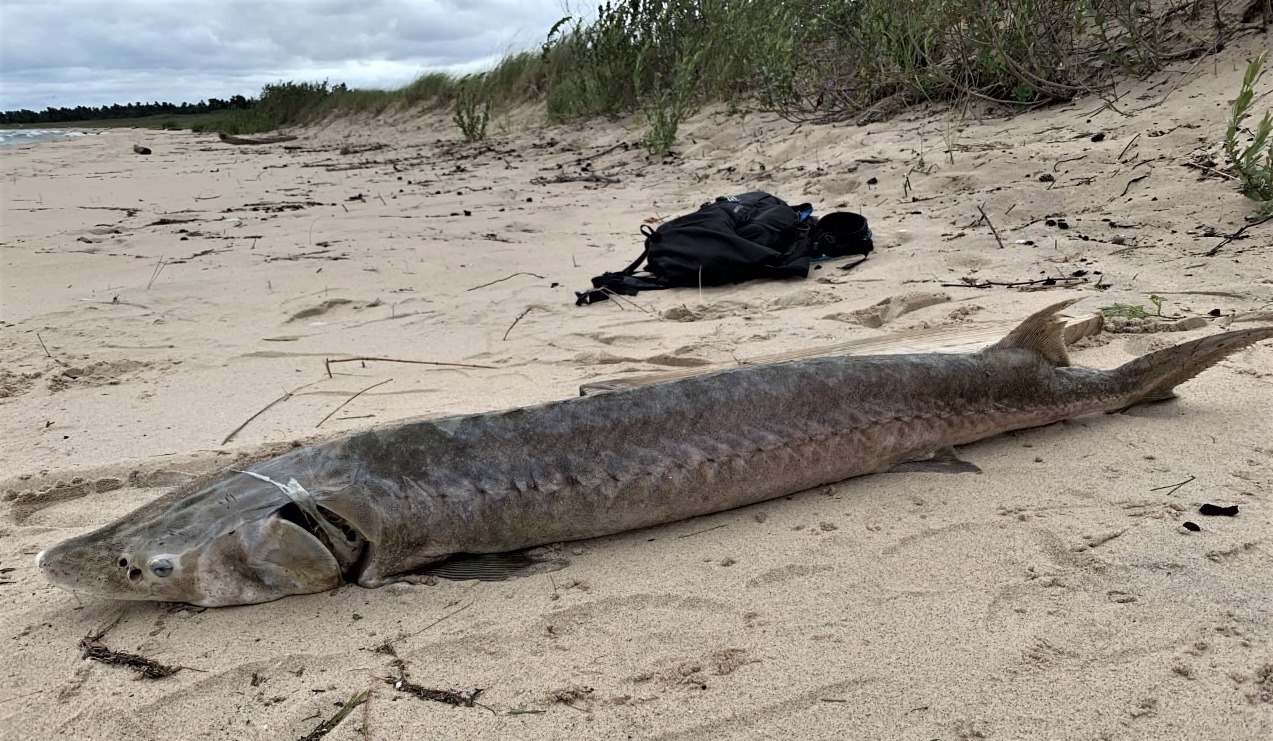
Lake Sturgeon Deaths Within Sleeping Bear Dunes Linked To E Botulism Outbreak Or High Water Temps
By Emily Tyra | Aug. 13, 2020
At least seven lake sturgeon — a fish currently listed on Michigan’s threatened species list — have been found washed up on the shoreline within the Sleeping Bear Dunes.
“They have all washed up in the last month,” Vince Cavalieri, Sleeping Bear Dunes National Lakeshore (SBDNL) wildlife biologist tells the Leelanau Ticker.
The SBDNL put out a call to action for beachgoers this week via social media: "If you find a lake sturgeon washed on shore, please notify the Sleeping Bear Dunes Natural Resources Department immediately at 231-326-4757. They are easily identifiable with their elongated bodies, flattened snout, toothless mouth on the underside of the head, and instead of scales the body is covered in five rows of large, prominent bony plates, called scutes."
“While we don't know for sure,” Cavalieri says, “it's possible that it's been caused by type E botulism. Lake Sturgeon mortality events in Lake Ontario, Lake Erie and Green Bay have been documented to have been caused by botulism in the past.”
He continues, “We are working with the USGS National Wildlife Health Center in Madison who are testing a gull carcass that we sent to them last week to see if they can confirm the presence of type E botulism in the area.”
Cavalieri explains that while the botulinum bacteria are naturally occurring in Lake Michigan’s cladophora algae mats and “probably have always posed some threat,” it's believed that zebra/quagga mussels have changed the lakes to a degree that makes E botulism more likely to occur. “Basically they filter the lake of particulates which allow sunlight to penetrate deeper into the water column where the cladophora algae grows. When the algae dies, it forms mats that have the perfect anaerobic conditions in which the botulinum bacteria thrives. The bacteria produces a toxin that is taken up by small invertebrates and eventually into fish and birds that eat them.”
High water temperatures in Lake Michigan is another possibility for the sturgeon deaths, says Cavalieri: “The high temperatures we experienced before last week could have led to a lack of oxygen that could have impacted the sturgeon.”
Sleeping Bear Dunes National Lakeshore partners with the Grand Traverse Band of Ottawa and Chippewa Natural Resources Department in protection of the lake sturgeon. Currently the sturgeon population is 1 percent of its historical abundance.
Of note, Lake Sturgeon live longer than most humans: “Sturgeon can live up to 150 years old. Hard to say the age of the one big one that washed up (pictured above) but it is likely at least 15 to 20 years old, if not older,” Cavalieri says.
CommentTuesday Filing Deadline Brings County Election Races Into Focus
Though early signs indicated a concerningly sparse field for this year’s impending Leelanau County Board of Commissioners ...
Read More >>The Latest Leelanau County Blotter & 911 Call Report
The Leelanau Ticker is back with a look at the most alarming, offbeat, or otherwise newsworthy calls ...
Read More >>Barge Owner Pleads Guilty, Gets One Year To Move Vessel
Donald Balcom, the owner of a decrepit barge that has been repeatedly abandoned at numerous points around ...
Read More >>Polka Kings Of The Midwest: The Past, Present, And Future Of The Cedar Polka Fest
The 42nd annual Cedar Polka Fest may still be four months out, but organizers are already gearing ...
Read More >>



